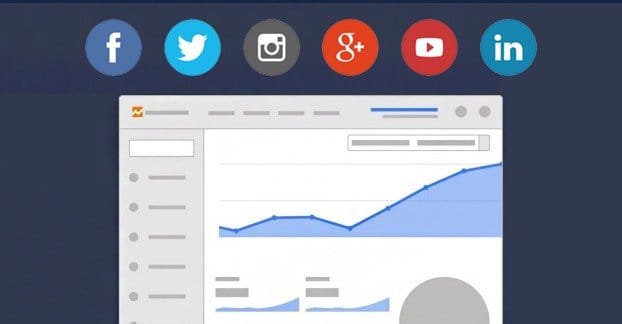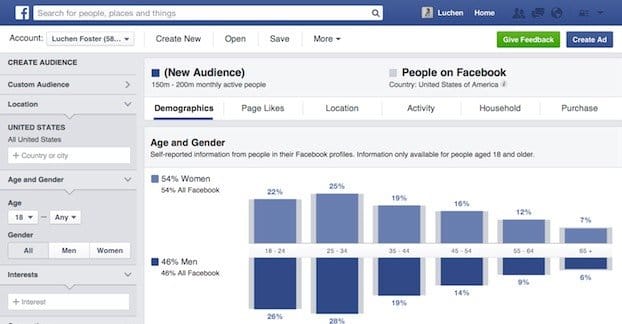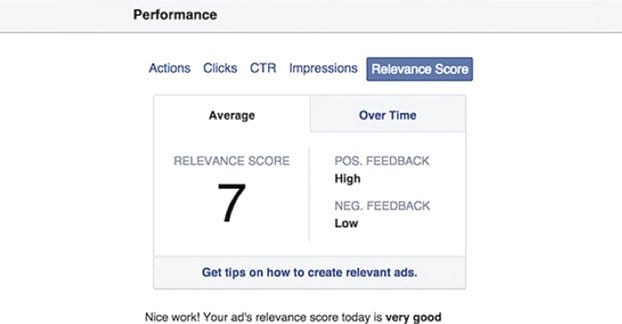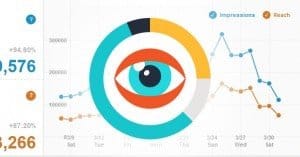 Written by ContentPowered.com
Written by ContentPowered.com
When we talk about social media marketing, we’re often mostly just talking about Facebook, Twitter, and occasionally one or two other networks. Google+ comes up sometimes, Instagram is talked about occasionally, and Pinterest gets a few mentions. However, when it comes to studying the actual data about return on investment, it’s a good idea to look at even those networks that don’t get the spotlight.
That’s what a joint survey between Social Fresh, Firebrand Group, and Simply Measured did a few months ago. They surveyed 551 social marketers and asked them what their top three best networks were in terms of pure ROI. The results are pretty clear cut.
Raw Statistics
Now, a group of 551 marketers isn’t necessarily that high, but it can be a representative sample and can at least guide you in the right direction. As long as the data is clear-cut, it’s a good place to start with your own testing, right?
Well, the data is pretty clear.
- 95.8% of marketers polled said Facebook had the best ROI.
- 63.5% of marketers polled said Twitter had the best ROI.
- 40.1% of marketers polled said Instagram had the best ROI.
- 37.7% of marketers polled said LinkedIn had the best ROI.
- 10.4% of marketers polled said Pinterest had the best ROI.
- 3.9% of marketers polled said SlideShare had the best ROI.
- 2.1% of marketers polled said Snapchat had the best ROI.
I would venture to guess that those finding the best ROI on places like Pinterest and SlideShare probably have very specific types of businesses. Pinterest is great for the DIY and crafty kinds of websites, and even then, it’s probably going to be #3 of the top 3. Snapchat seems more likely for a very narrow brand targeting people who are also on Facebook. All told, the data is clear; Facebook is the winner. Anyone who isn’t finding an excellent ROI on Facebook is somehow using the site incorrectly, or has been banned from it.
Distinct Lack of Surprise
You’ll notice that I didn’t try to sugar-coat the data or draw it out for suspense. Frankly, you all probably knew coming in that Facebook would be the best, and not just because this site tends to focus around Facebook topics. No, it’s just a site that has too many things going for it.
I mean, look at this:
- Facebook is predicted to have 1.43 billion monthly active users by the end of 2016. That’s a massively huge audience. You’d have to have a very specific audience and a very specific business to not find success on Facebook. I’m talking “I only sell one specific, high priced industrial pipe fitting” kinds of specific.
- Facebook has an incredible number of individual targeting options, which all combine to create very specific audiences. Seriously, they have enough individual targeting options that we wrote an entire post just dedicated to what they are.
- Facebook ads can be optimized very easily, so long as you know a little bit about what you’re doing. There are hundreds of guides for Facebook ads optimization online, including several on this side, so you don’t really have any excuse beyond overconfidence and haste.
- It’s quite easy to drop the cost of ads on Facebook, and bolster them with organic reach. I’ll talk more about this later in the post.
- Once you gain momentum on Facebook, your page virtually carries itself, so you have a positive ROI before you really even begin. Of course, this doesn’t really kick in until you have a few hundred thousand followers, but once it does, you might be surprised. I’ve seen pages coast for a long time with a minimal amount of paid advertising.
There are two main problems I see with Facebook ads that turn people off. The first is trying to use them with a too-small audience, before your page really has any clout or any value to offer. The second is trying to jump in the deep end and running ads incorrectly, in a way that burns money and doesn’t get you any significant returns.
Solving the Problems
The first problem I see the most is that people simply don’t quite get how audiences work. I’ve seen businesses running ads and telling me that they have very low view counts, despite high frequencies, and as a consequence they get ignored quite a bit. The reason is that their page only has a few hundred followers, and rather than advertise to a broad audience, they’re advertising just to their own followers.
Now, normally, advertising to your own followers is just fine. Jon Loomer even recommends it as the most viable tactic for high returns, and I agree. It’s the difference between a generic audience and an engaged audience. However, it only works when your audience is of a reasonable size beforehand. If you only have a hundred or so followers, you’ll quickly flood them out with paid content, and they’ll be less likely to pay attention to you.
The way to solve this, of course, is to use Facebook ads to gain followers. The problem here is that it’s going to make some of your other metrics look bad. You don’t get a very good return on investment monetarily when the goal of the ads is not a monetary reward, right? However, it’s like laying the foundation for a house. Sure, you can build a shack without a foundation, but you’re strictly limited in the size of the structure before the ground falls out from under it and the whole thing tumbles down.
Only once you have built up a few thousand followers, maybe up into the tens of thousands, can you really target them with monetary goal ads and see a noticeable return.
The second problem is simply a matter of patience. Too many brands hear about how simple and powerful Facebook ads are, and I admit, some of the posts I’ve written kind of lend that impression. I tend to forget that newcomers who don’t know the first thing about PPC might think it’s pretty easily plug and play. The fact is, it takes a lot of experimentation and trial and error to get to a point where most ads you make are guaranteed at least a positive return, albeit not necessarily much of one.
If you’re looking to get into Facebook ads, you need to recognize that even with the most detailed guides and the most foolproof methods around, you’re still going to fumble and waste some money. Even experienced marketers run campaigns that waste money and gain nothing. The trick is to recognize that it will happen, and that it’s not the end of the world, and it’s not a sign that Facebook is all one big scam. I’m of the firm belief that anyone claiming Facebook ads are ineffective or a scam is someone who simply failed to use them properly.
Have patience. Use Facebook ads for a while before you give up on them. Recognize that you can’t just jump into superstardom, you need to experiment to find out what works for your audience. No one, no matter how experienced, can tell you exactly what will work without a good look at your analytics, so take the time to take that look yourself.
Dropping Costs to Boost ROI
The act of optimizing your ads for a better return on investment comes down to basically two things. You can lower your costs, or you can increase your outcomes. First, let’s talk about lowering costs.
The cost of Facebook ads will vary wildly, even within the same brand, based on a wide range of factors. This is both a blessing and a curse. It means it’s a complex subject to tackle, and there’s no one magic technique you can use to drop costs. However, it also means that there are a ton of different vectors you can take which may help, and it’s a process that never has to stop.
Rather than go into it in details – like this post – I’m just going to cover a few options in brief here. You can explore more if you feel like this is an avenue you can pursue to great effect.
- Add or remove targeting factors to change the audience you’re targeting. An overly narrow audience tends to be more expensive per click, on the assumption that you know what you’re doing and targeting the right valuable people. Conversely, an overly broad audience costs a lot less, but will require a lot more clicks for a conversion, since you’re getting a lot of misses as well as hits.
- Work to increase your ad relevance score. This score is a number between 1 and 10 and measures how well your ad matches your brand and matches your landing page. Discrepancies can easily arise when you’re testing, as you get more and more distance between your original message and your effective message. Ideally, you can change your landing page to help, but changing your ads will work as well.
- Make sure you’re choosing the right kind of ad objective for the purpose of your ads. If you want to grow your page, use page growth objectives. If you want email signups, use the conversion objectives. Any inefficiency in this will hurt your ROI, potentially significantly.
If you think the cost of your ads isn’t going to lower much, or if you’re only getting a penny here and there, it’s time to put the 80/20 principle to use and stop wasting time on diminishing returns.
Boosting ROI From the Other End
If you can’t lower your costs, you need to boost what you’re getting for those costs. That means you need to figure out what you want out of your ads and how you can boost that outcome.
For example, you might make your landing page into more of a conversion powerhouse. If you haven’t put a lot of time into landing page optimization, you never know how many people are dropping away due to an overly large form, a lack of information, or an autoplay video.
You might also choose to change what your actual goal is. If you’re trying to go from Facebook ad directly to product sale, you’re probably not going to do so well. If you funnel them into a mailing list, you can convert mailing list users into customers on an ongoing basis. Sure, it’s harder to track the direct ROI of the ads this way, but that’s fine. Never let one single number rule over you. You can also just run ads to raise awareness of your site and your content. There’s nothing wrong with simply promoting a post linking to a highly pushed blog post.
You should also pay attention to your ad frequency. Frequency is a measurement of how often people in an audience have seen your ad. If you have 100 people, and all of them have seen your ad exactly once, that’s a frequency of 1. If only 50 people have seen the ad, it’s a .5 frequency. Psychological studies suggest that users need to see something at least three times before they remember it, which seems to indicate a frequency of 3 is ideal, but you also risk flooding users. In general, you should angle for 3, though. Too low and people aren’t seeing your ad, meaning you’re not making the most of your targeting. Too high and you’re virtually spamming them, wasting money and potentially getting yourself blocked.
You should always be experimenting as well. Promote different kinds of content to different audiences. Split test using unpublished posts. Try out different ad images, different copy, different colors. Even small, innocuous changes can have a surprisingly large effect.
I know I haven’t been too overly specific here, and that’s partially on purpose. There are all sorts of specific resources, many of which I’ve linked to, that you can check out for individual optimizations. I’m just trying to be general to help you get an idea of what you should be optimizing in the first place.





